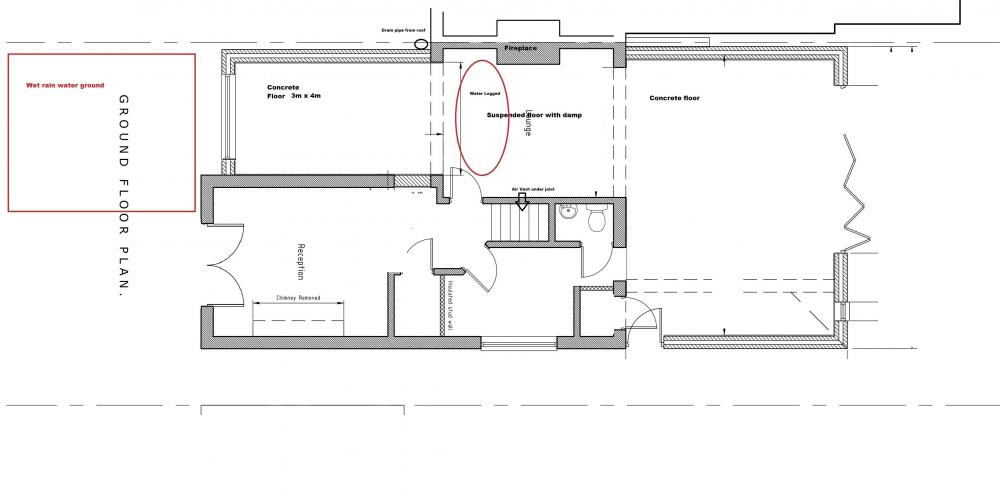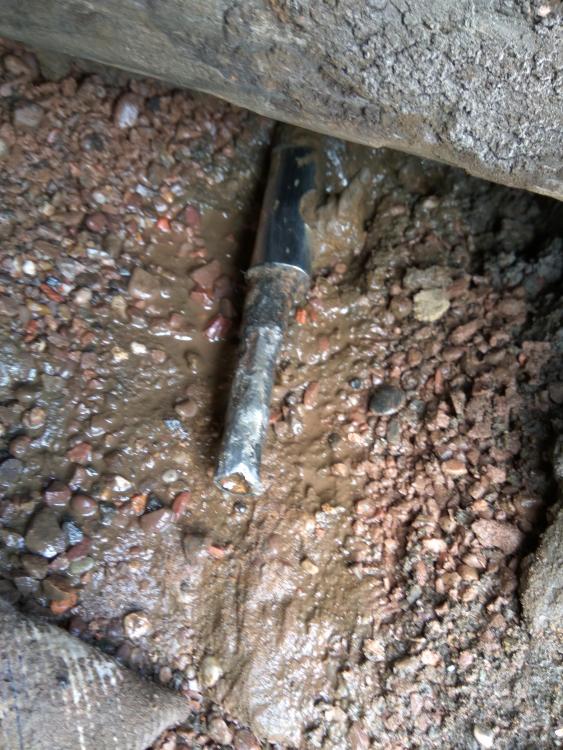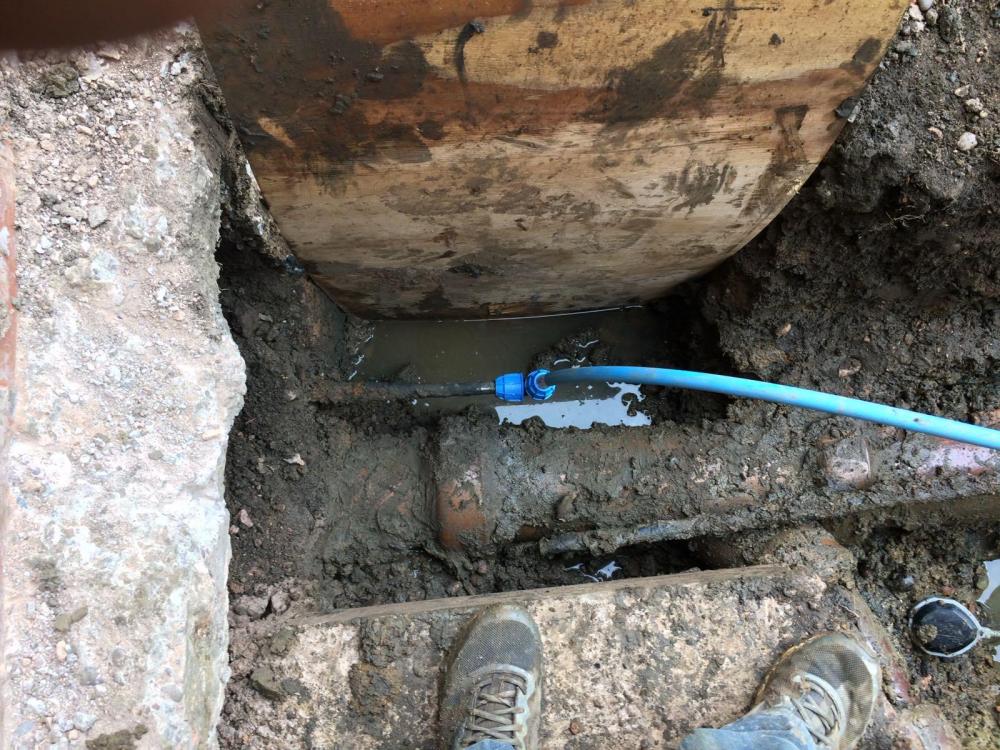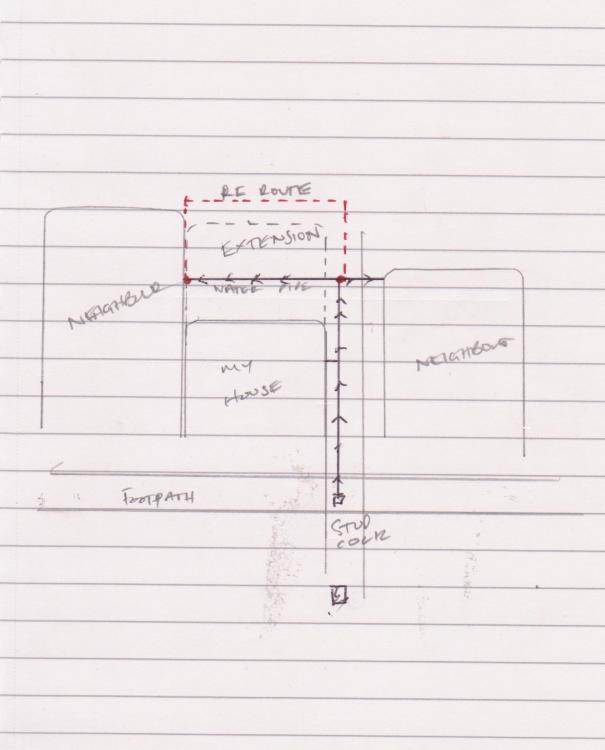
ash132
Members-
Posts
12 -
Joined
-
Last visited
Recent Profile Visitors
The recent visitors block is disabled and is not being shown to other users.
ash132's Achievements

Member (3/5)
0
Reputation
-
Yes, I had the drive cleared and some MOT put down before the extension work started. There's probably 2-3 courses of brick between the air brick and ground level Yep, 1930's - still had a back boiler when I bought it! I have thought about it and it would be as a last resort. Now that the house is sealed I’m not keen on having the mess of concrete/ screed barrowed in through the front door. The house is two skinned with cavity. I had a builder around today who could not work out where the water was coming in from. Said he'd never known water to come through a solid concrete floor like I’ve got at the front. Though, there’s a small gap to the side of the front where the drain pipe from the roof is and he reckons the water might be forcing its way through this gap between the foundation and neighbours house through to the suspended floor?! My idea is now is to scrape off a layer of the soil from the front and lay down some DPM, lap it into a land drainage channel and back fill. Hopefully the bulk of any heavy rain then just drains off into the mains... BC have suggested internally, I could use a layer of roof membrane under the joists – allow air up, but stop and water coming through. I’ll see how this works first.
-
Yes, there's air bricks to the back and front connected to ventilation ducts which run through to the suspended floor. I’ve also knocked out a brick as shown in the pic from under the floor which leads to a cubby hole under the stairs. I plan to stick a floor grill on the other side to allow more air in.
-
I’m in the process of renovating my house. I’ve had a rear full length extensions and small front single storey extension to square off the house from the front – it was previously L shaped. In between the two extensions, which have solid concrete floor, I have the existing living room with a suspended floor – I Have had the floorboards up for the last 3 weeks as I’ve been cleaning out the void and insulating between the joists. About 3-4 days ago I noticed some puddles of water on the ground after the heavy rain and then again today. I went to check on the house this morning and the ground looked OK, damp but no puddles. I then came back in the evening and noticed some large puddles of water. I bought a wet vacuum and reckon 7-8 of the 14ltr buckets of water drained out and it was still bad. The ground would literally fill up with water within a few mins of draining it out. I live in a clay area which is prone to water logging. I’ve had land drainage put into the garden and the amount of water running through to the man hole is quite surprising, even when there’s no rain, there’s a steady stream. The front of the house is a bit exposed at the moment - its just ground with no slab or anything and rain water has been forming large puddles where the ground has been taking the weight of the skips. My question is it possible for rain water which is puddling on the drive to make its way under a concrete floor and through to a suspended floor? If not then what is the likely source of the water? Is it possible for that much water to come down a chimney or a faulty drain water pipe? I’m looking to install land drainage on the front but is it worthwhile putting some kind of drainage under the suspended floor before I seal it back up? Any advice would be appreciated.
-
Thanks for all the replies. I managed to get next doors landlord in today who has agreed to foot the bill his side and use the guys i've got in I attached the pipe to a Philmac 15-21 adapter and that seems to have stopped the leak as well temporarily Strangely enough though the pipe looks to be attached to some kind of stainless steel piece. It was only after polishing it up that i noticed. Not too sure what it is but I think its some kind of clamp?!
-
I asked the question today and they wont touch it either (its my responsibility). Not even as a paid job. I've got some of their approved contractors coming out and taking a look at it tomorrow. Haha, after the day i've had with this and other water pipes a big dirty donor might not actually be a bad idea. I figure paying and replacing for all the neighbours pipework would be worse case scenario. I'll wait and see what the approved contractors mention tomorrow but I see no ones mentioning the solder on a new piece of pipe as an option so i'm assuming that's a bad idea?
-
I'm going to re-route it around my extension , so it wouldn't actually be going under mine. The stop cock comes up from the pavement, down the side of the house, feeds into mine then goes a bit further up and the tee's off left and right. It feeds the property on the left (where the pipe is and two properties to the right. So where it tee's off i'm having all that replaced to outside the front print of the extension, with the intention replacing all the way up to stop cock . But I cant do anything about the pipe feeding onto and under the neighbours extension. Yes, my thoughts as well.
-
I have discovered a corroded water pipe which come out from underneath the neighbour’s extension while I’ve been digging my footings. The entire pipe was gone, I’ve started to replace everything from my side with mdpe up to the stop cock and reconnect the neighbour’s water however none of the fittings I’ve bought seem to catching onto the old pipe from the neighbour side and its constantly drip leaking There’s only a short bit of pipe to work with before it disappears into concrete. So i need to be careful on how to best put a permanent fitting onto the pipe as it will be between the party wall. Had a plumber out today and he said he hadn’t seen a badly corroded pipe like that for a while, he couldn’t guarantee the work so wouldn’t touch it. It’s been suggested to re-route the pipe around the neighbours back but really don’t fancy going down that route. Their house is rented and I’ve never met the owner. It’ll take weeks to sort something out I don’t want to but I’m seriously considering getting someone to come in after the BC inspection and solder on a fresh piece of pipe that we can work with! Before I do, is there anything else I could possibly try or do?
-
Metal of some sort. Its not the ST Main - its a 20-25mm clear water pipe My service is in black, on the plan. In between my house and the vertical pipe from the footpath
-
I’ve been getting my footings done for a rear extension and while exposing the Severn Trent main pipe we found a 20-25mm lateral water pipe to the side of it as well, which is rotten through and has sprung a leak in the middle of my footings (I’ve currently cut out a section and put in a 20mm MDPE pipe with stop cock) The main stop cock is at the front of my property and a pipe looks to run down the right side of the property under a path which leads to the garden. There’s a T junction about 3m away from the property which then goes both left and right to feed both the neighbouring properties. The neighbour to the left already has an extension and both the ST main and this water pipe both run under his extension. The problem is I’m building my wall right up against his and I’ll need to cut the pipe and re-route it around my new extension as per South Staff instructions. I’m concerned that in the future if there’s ever any kind of leak then there will be no way to access and repair the new joint. Not too sure how to tackle this. Even leaving a small gap between the extension and the neighbour’s extension wouldn’t really be enough space unless realistically I leave a 500mm or so gap? I’ve attached crappy pic to explain but would appreciate any suggestions on how best to go about it without reducing the extension size.
-
West Midlands Ye, spoke to someone who works for BC and there's no requirement to have any internal beams and lintels galvanised. Most of the fabricators I've been in touch with will prime. Thanks All.
-
Thanks for the replies, I did indeed send the spec off to a few local steel fabricators and had quotes come back for around £300-£350. Just asked my architect to see if they would be OK to use. If so, that's a huge saving. So thank you all. The lintel spec does mention. 6mm structural grade steel plate Grade S275 to BS EN10025 - is there any way of checking or knowing if the steel fabricator company is using this grade of material? The other thing i wanted to see is it it was worth me coating the Lintels and Beams that i'm getting made with any kind of rust-proof paint or spray. Non are external but the steel fabricators i've been in contact with don't galavnize. So is it worth treating them with anything before installing them?
-
My architect has specified a 4.5m Catnic CXL290 lintel on his drawings sitting on top of my bi-folds. Shopped around and the cheapest I can find this is at cost of over 1k. Found an exact spec on this website: https://shop.elite-portal-frames.co.uk/https-shop-elite-portal-frames-co-uk-lintels-cxl290-lintels-cxl290-extreme-loading-lintel-2100mm-html/cxl290-lintels/cxl290-extreme-loading-lintel-4500mm.html its not Catnic but identical in-terms of the spec i'm after - its also around half the price. The question I guess is should i just pay full price and buy a proper Catnic lintel from one its stockists or go for the alternative which is half the price, not a Catnic brand but might also possibly be inferior in quality?




